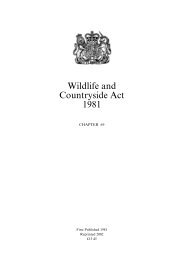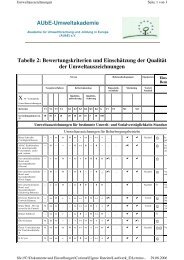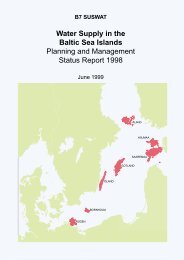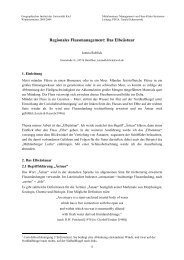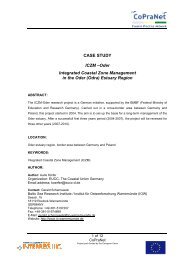View - IKZM-D Lernen
View - IKZM-D Lernen
View - IKZM-D Lernen
Create successful ePaper yourself
Turn your PDF publications into a flip-book with our unique Google optimized e-Paper software.
Haas & Peekna & Walker Folklore 23<br />
chose not to give the same honor to others in the pagan Indo-Europeans’<br />
pantheon.<br />
SAAREMAA BURNING<br />
The meteorite crash caused an immense forest fire on Saaremaa.<br />
This might be the reason for the association of Saaremaa with a<br />
holocaust, in the folk songs of Estonians and Finns (Meri 1976: 111–<br />
112). Could the fire recalled in these songs not be due to a lightning<br />
strike or unattended campfire? Then why would such an event on<br />
Saaremaa be considered newsworthy in Finland, where there must<br />
have been such ordinary fires as well? The connection with the<br />
Kaali meteorite is made more plausible by the details in an Estonian<br />
song, which refers to whirling stones, objects thrown by the<br />
stars, thunderous noise, and even a burning lake!<br />
Nägin Saaremaa põlema, I saw Saaremaa burning,<br />
tule luugista tulema, I saw the pyre rampaging,<br />
sood süütsid, järved põlesid, The fen caught fire, the lakes blazed,<br />
kivid keereldi ojusid, Stones swam in the whirlwind,<br />
tähed lõivad tääringida, Stars were tossing dice,<br />
mõõga otsad mõõringida. Swords were howling thunder.<br />
(Translated by Juhan Kurrik, 1985: 250–251)<br />
The song goes on to lament the human casualties, in a manner<br />
reminiscent of the Kalevala rune in our Appendix.<br />
WANDERING LAKES<br />
When looking in Latvian sources for folk tales that might contain<br />
some echo of the Kaali catastrophe on Saaremaa, we found an interesting<br />
pattern. There are many stories about lakes that fly to<br />
new homes, accompanied by one or more of the following phenomena:<br />
a dark sky, tremendous racket, warning calls from birds, fish<br />
landing on the ground, buildings getting swamped, and people drowning<br />
(Sterlete 1958: 128; Šmits 1970: vol. 15, 428, 437; Ancelane 1991:<br />
84, 148, 204, 206, 219, 221, 223, 229, 241, 243, 248–249, 260, 280,<br />
297). Latvia has many lakes all over the country, but these stories<br />
are concentrated in the coastal area formerly occupied by the Livs,<br />
www.folklore.ee/folklore/vol23<br />
68




